Written by
on

Don’t overlook undergraduate certificates in your efforts to increase enrollment. The volume of undergraduate certificates is nearly equal to that of associate degrees and has a higher growth rate.
Undergraduate Certificate Volume — Student Demand Continues!
The table reflects actual degrees awarded to students.


Shortest Certificate, Faster Growth
Undergraduate certificates completed in 12 weeks or less posted 11.9% growth. Students want short education sprints and convenient delivery to gain skills needed for jobs.
Community colleges and technical and vocational schools offer the bulk of the career and technical undergraduate certificate programs in the U.S. to help students directly enter the workforce. Among CTE-oriented programs, here are some of the fastest-growing for 2021-2022 in student demand:
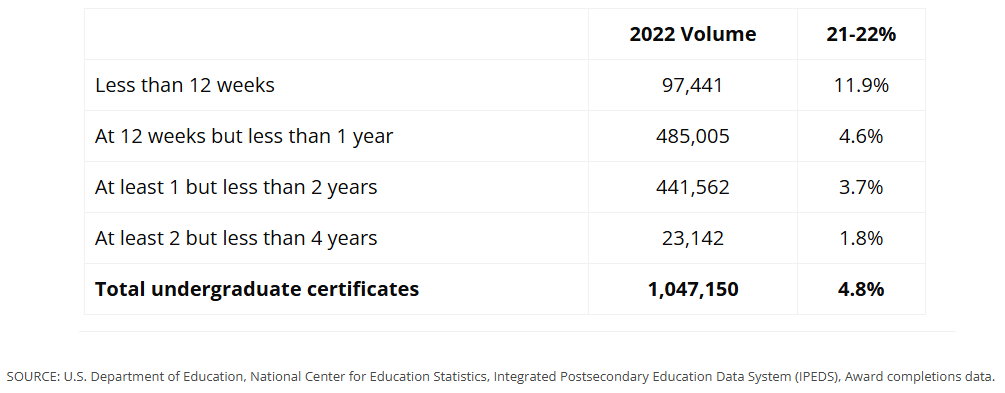
Source: IPEDS Degree completions: 1,000 or more awards in 2022, faster than average growth rate among all undergraduate certificates.
Health Sciences Certificates — Fastest Growing
Vocational Nursing and Nursing Assistant certificates are the biggest programs in health sciences at the undergraduate certificate level. The graphic below shows other health science certificates experiencing sharp growth.
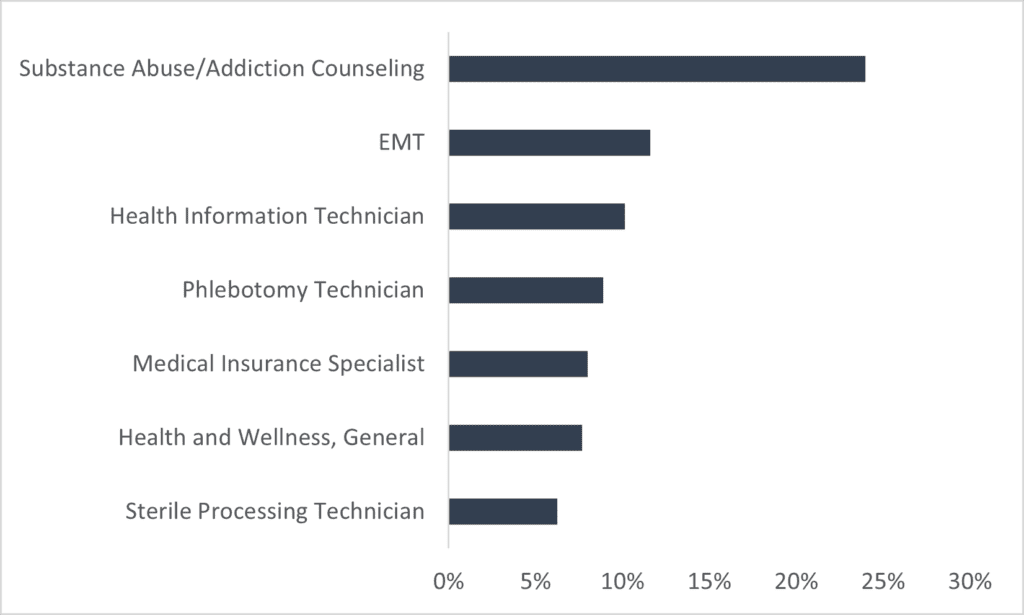
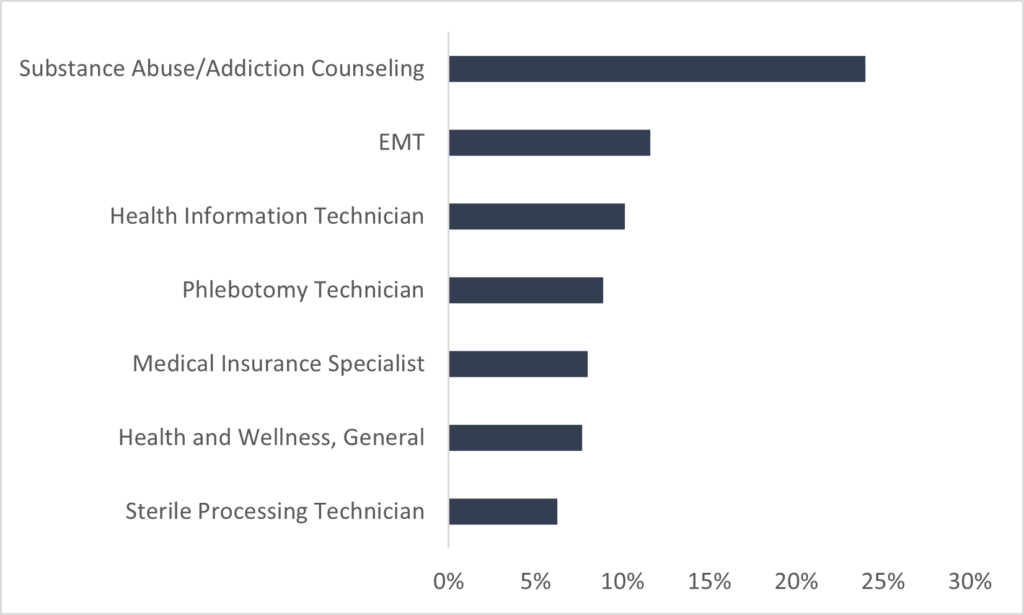
Source: IPEDS Degree completions: 1,000 or more awards in 2022, faster than average growth rate among all undergraduate certificates.
Complementing bachelor’s degree programs in public health, exercise science, healthcare administration, human services, social work, and psychology are these possible certificates:
- Health and Wellness
- Substance Abuse and Addiction Counseling
- Health Information
Business, Tech, and Arts & Sciences Certificates — Fastest Growing
Like last year’s report, many of the fastest-growing certificates are in computer and information technology, with subjects such as:
- Networking (LAN/WAN, Cloud Computing, Amazon Web Services)
- Computer Programming, which includes software programming and web development (HTML, Java, SQL, Agile, Project Management, etc.)
- Cybersecurity (CISSP, CEH, etc.)
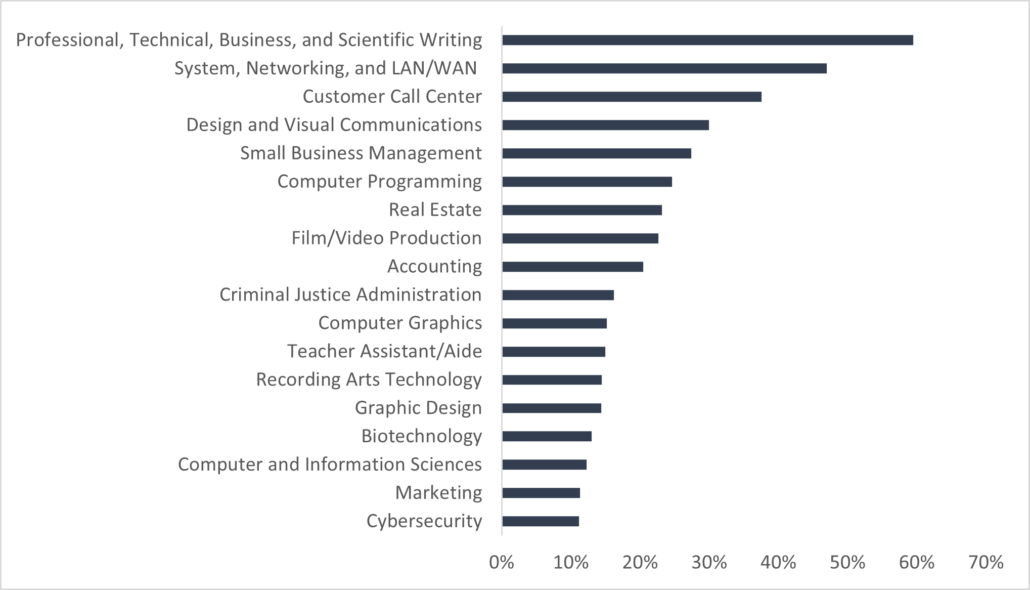
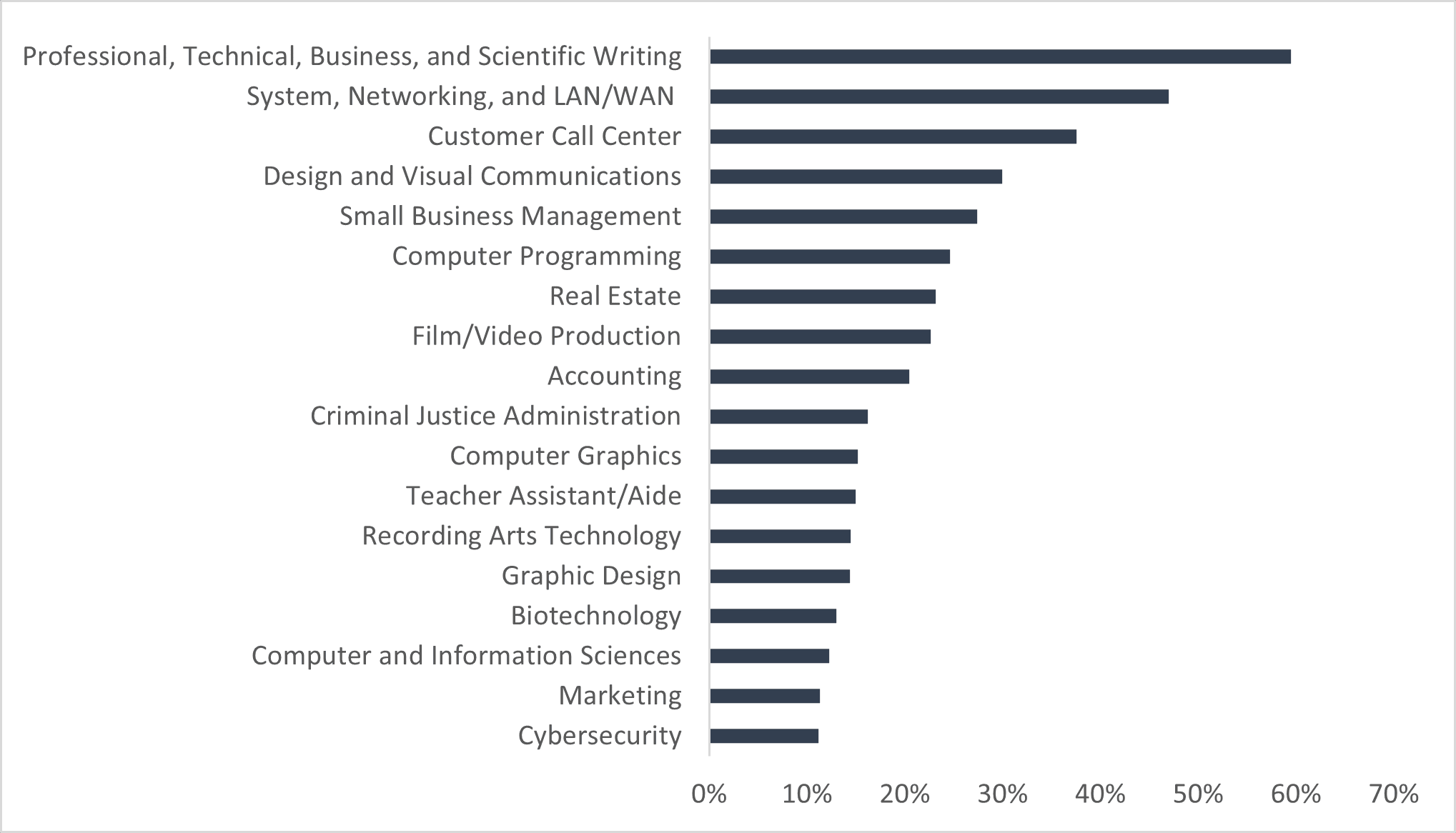
Source: IPEDS Degree completions: 1,000 or more awards in 2022, faster than average growth rate among all undergraduate certificates.
Some notable surprises for fast-growth programs in the graphic above are:
- Technical writing
- Design and Visual Communications, Computer Graphics, Graphic Design
- Film/Video Production
- Recording Arts
Many of these skills are needed for creating content across all industry sectors and can be offered alongside existing communications, public relations, marketing, and arts programs so students can add skills to their resume while achieving a related degree.
Certificate Program Development
Often, colleges and universities, especially large online universities, offer stackable certificates, so credits earned apply towards an associate or bachelor’s degree. Consider doing the same to attract degree completers, adult students, and career changers to your college or four-year programs.
Student demand is an important piece to consider, but also relevant for academic program development are:
- Labor and occupational trends
- Local employer needs and input
- Competitor offerings and competitor performance in similar programs
- Associations and credentialing bodies detailing skills in need within the profession
Altogether, student demand, labor market data, and competitive intelligence can shed light on the feasibility of a new academic program at any award level. Four in 10 new academic programs fail after launch, so you’ll want to be armed with a strong, data-supported proposal before investing. We’re ready to help you move fast!
Related Reading: Micro-Credentialing and Short-Term Certificates Insights
Ready to Get Started?
Reach out to us to talk about your strategy and goals.


